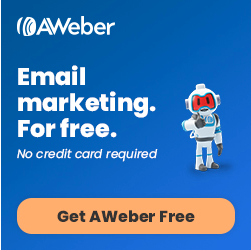Lead gen affiliate marketing is an abbreviation of lead generation affiliate marketing. What is lead generation in affiliate marketing? Lead generation for affiliate marketing typically refers to the collection of email details of online visitors. To attract an audience towards a lead generation page, (or landing page), the affiliate uses some form of marketing. So in order to generate leads for affiliate marketing you will need to have already attracted an audience. This might be from using any number of marketing methods:
- Blogging or video blogging (organic content creation)
- SEO – search engine optimisation
- Paid marketing – PPC or pay per click direct response advertising
- Social media marketing – using either paid or unpaid social media marketing

Lead gen in affiliate marketing is often done from either a website, like this one, or a specific landing page. The advantage of using a purpose built landing page is that there are fewer options for visitors on a landing page than there are on a website. On a website, there’s many options for visitors to consider. Visitors can browse around and click through many pages on a website. On a landing page there are only two options: subscribe or leave. This means the affiliate can more easily optimise the marketing and landing page for lead generation.
Lead Gen Affiliate Marketing: The Landing Page & Driving Traffic
A landing page is a simple form with a go-to message, encouraging visitors to opt in to an email list for more information. Here’s an example of a landing page I recently created on one of my websites:

As you can see, there’s very little information on the landing page itself, so a marketing message is placed before visitors land on this page.

Marketing through video is useful because you can convey a lot of information in a short video. Whereas with written word, it can be more difficult to explain the same message. Some research suggests that over 80% of what we communicate is non-verbal, so you can understand why video marketing is so important for affiliates.
Customer Avatar & Targeting
Before a marketing strategy and message can be built upon, affiliates should get to know who it is that they are aiming their advertising at. When you understand this very well, your marketing is going to be much more effective. By getting to know your target audience for affiliate marketing, you can more easily place your messages in front of the right kinds of people and speak to them more personally about their particular problem. There’s millions of people on the internet. Targeting everyone with your marketing will likely lead to not selling anything! Sell to everyone and you sell to no one. Why? Because not everyone wants the remedy for corns on their feet, or to build an online business.

Marketers understand this and so instead of sending their advertising out to everyone on the internet, they target specific people who meet certain requirements. They first get to understand their customer avatar and know who they can serve the most with their products or services. The “customer avatar” is the “perfect customer”.
Certain people will gravitate towards certain products more than others. A DIY store might cater to mostly people who are over 30, for example. So trying to sell to people in their 20’s will likely waste a lot of advertising budget for a DIY store.
Why Use Lead Generation For Affiliate Marketing?
Why use lead generation for affiliate marketing then? Why not sell directly from a website? On a website, a visitor can browse around and look at whatever they want. But they usually only stick around for a few minutes, before they leave forever! Since most website visitors won’t take any action, and research shows that most online customers will need 6-8 touch points before making a purchase, it’s a good idea to collect their details. This is often done on a website with some free giveaway offer, if it’s not done on a landing page. Once the affiliate has collected the email address of their visitor, they can follow up with email messages over a much longer period of time.

Affiliates can keep in touch with potential customers once they have their details. On a website, they only have a few minutes to “close the sale”. But with email marketing, affiliates can send out emails weeks, months and even years after the visitor has signed up to the affiliate’s email list. Traffic is also hard to come by and you need to either earn traffic through content creation or pay for it. But with email marketing, you can compile a list of interested subscribers who you can then send directly to your offers and products. The ability to control your traffic is worth a lot. Plus, you can build trust with your subscribers over a longer time period. This is something you can’t do on a website.
Other Ways To Collect Leads
There’s multiple ways in which affiliates collect leads to build their email list and you can do this from a website or landing page. This website blog is a source of traffic and leads for me. As you can see, there’s a couple of options to sign up on the website. Pop ups and drop down banners are a good way to engage with your website visitors. Although annoying, they work and let people know what you are offering!
Many affiliates will use landing page software too which lets them more easily cross test their landing pages to help optimise their opt in rates. See also free leads for affiliate marketing for more on this topic.
